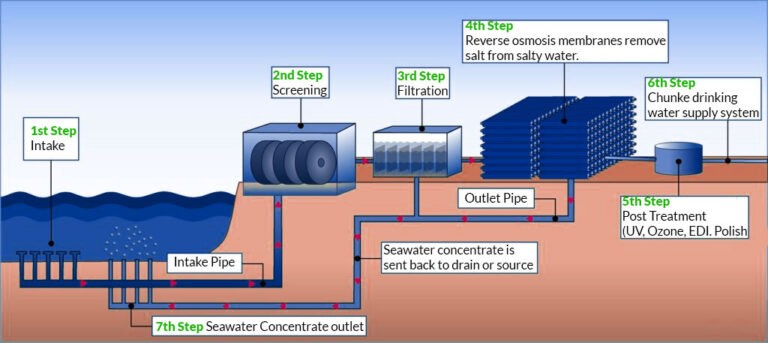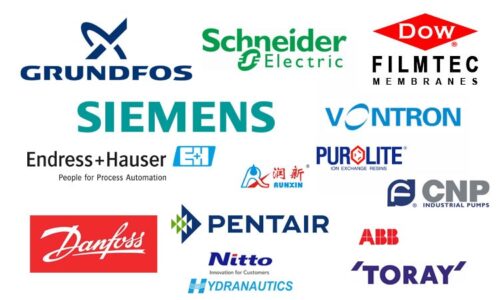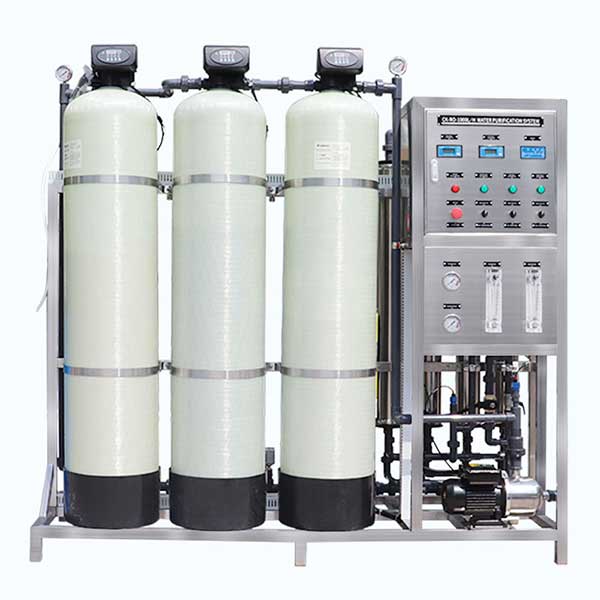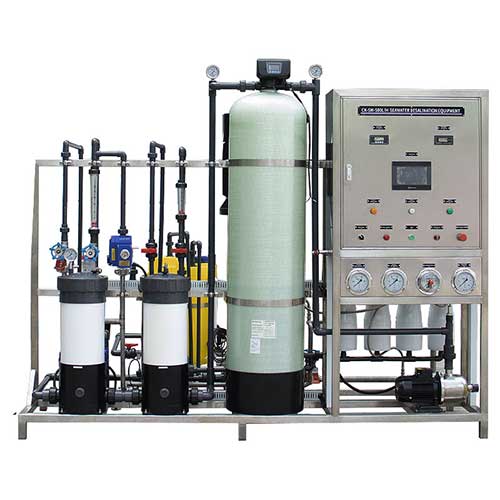What is Water Desalination Plant, Think Why Is It Important?
Water desalination plant is becoming more popular in the world. Because of global warming, environmental pollution, drought in some regions. And all these reasons, force scientiest to find a way convert salty water into fresh water.

In this article, as a reverse osmosis water treatment system producer in China. Hence, we will explain how to remove salt from your sea water or brackish water with RO Plant.
What is desalination?
Desalination (desal) is the process of turningsalty water like seawater, brackish water, deepwell water, borehole water into drinking water accordingly. So, it is used worldwide where groundwater reserves don’t supply enough water for the population. The pure water resulting from desal is mixed with available groundwater at constantly varying levels.

Huge desal plants (water desalination plant) supply water to some of the world’s driest parts, including the UAE, Saudi Arabia, and Israel. The first large-scale, land-based thermal distillation began in 1928. There are now around 20,000 desal plants around the world supplying water to more than 300 million people accordingly.
Chunke Water Desalination Plant Options from China
Capacity Range: 2m3 to 72m3/Day
Membrane Diameter: 2.5″-4″
Working Pressure: 150 to 250psi
Feed Water TDS: 1000 to 10.000ppm
Capacity Range: 72m3 to 7500m3/Day
Membrane Diameter: 8″
Working Pressure: 150 to 450psi
Feed Water TDS: >2000ppm
Capacity Range: 2m3 to 38m3/Day
Membrane Diameter: 2.5″-4″
Working Pressure: 700-1000psi
Feed Water TDS: 20000-40000ppm
Capacity Range: 38m3 to 2500m3/Day
Membrane Diameter: 8″
Working Pressure: 1200psi
Feed Water TDS: 20000 to 40000ppm
How is salt removed from seawater, brackish water or brine?
There are two main ways to remove salt and other minerals from seawater.
Thermal desalination involves boiling the water to create steam in evaporation domes, leaving behind the salt and other minerals. While effective, some minerals can be left behind.
So, membrane distillation, or reverse osmosis (RO), is a more favourable technology. In this process, water is forced through a membrane that only water molecules can fit through. Hence, it’s more efficient and produces more pure water than thermal distillation.
Chunke is reverse osmosis membrane filtration system design and manufacturing company in China, Guangzhou. Meanwhile, we are very near to Baiyun Airport, when you visit Guangzhou, China, you can write reverse osmosis water treatment near me, you can find us very easy in Google, Facebook or Baidu. So, we come to pick up you and show our water desalination plant project cases.
Desalination Process

1. Salt Water Intake
There are different method to intake water from the source. Meanwhile, for seawater intake, please read our article, it explain all details.
2. Screening
Mostly, in seawater application. seawater or ocean water has so many mosses, fish, shrimp, seaweed and so on. Therefore, we are using screening to remove this kind of bigger organic and inorganic matters.
3. Filtration
In water desalination plant, we always suggest to end-user to use mechanical filter (sand filter, carbon filter or disk filter). Because sand filter and activated carbon filters remove most of small particles and prepare water as well before membrane filtration in water desalination system. Result: your membrane life is longer and save a lot of money.
4. Reverse Osmosis
Reverse osmosis is pressure driven process. So, we force source water to semo-permeable RO membrane with high pressure pump. So, Chunke as water desalination plant producer suggest using DOW Filmtec, Toray, Vontron Sea Water Reverse Osmosis Membranes (SWRO Membrane) and Teflon coated, 316 or Duplex material booster and high-pressure pumps. In most of project we are using Danfoss, Grundfos, CNP or NYP brand well-known brands accordingly.

5. Post-Treatment
After reverse osmosis membrane filtration depends on application, we can add some post-treatment equipment like UV Sterilizer, Ozone Disinfection, Mix-Bed Demineralization, EDI (Electrodeionization), Polishing Filters or alkalination accordingly.
6. Water Supply - Pipeline
Water supply can be your fresh water pipile line or water storage tank. So, after water desalination plant, treated water is going to water supply system.
7. Seawater Concentrate Outlet
Hence, concentrated water as regards to your country regulation can go back to water source or drain.
How does water desalination plant work?
We explain how desalination plant work in this link: How water desalination plant work?
And also you can see from below video accordingly.
Is desalination the answer to water scarcity?
Many countries and island populations depend on desal for drinking water, industry, and agriculture. With continued population growth and a changing climate, demand for water will only increase. Meanwhile, some estimates suggest that by 2030 there will be a 40 per cent gap between water supply and demand.
Advantage and Disadvantage of Water Desalination Plant
Desalination is a growing need as the world’s fresh water supplies dwindle. According to the aforementioned UN study published by the journal Science of the Total Environment, combined with a responsible use of water resources, it may be key to solving water scarcity in the future despite certain disadvantages that should not be overlooked.
So, the water desalination process is not impact-free since the residue resulting from the process is brine, wastewater with a high concentration of salt and pollutants, which in many cases is discharged into the sea and affects ecosystems. Specifically, the study quantified the discharge of brine at 142 m3 per day. So, there is also a risk of seepage that can contaminate coastal aquifers.
So, Chunke ZLD (Zero Liquid Discharge) can be added to your water desalination plant and you can get solid waste.








